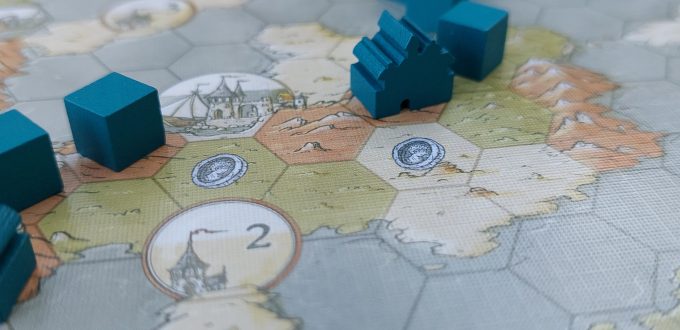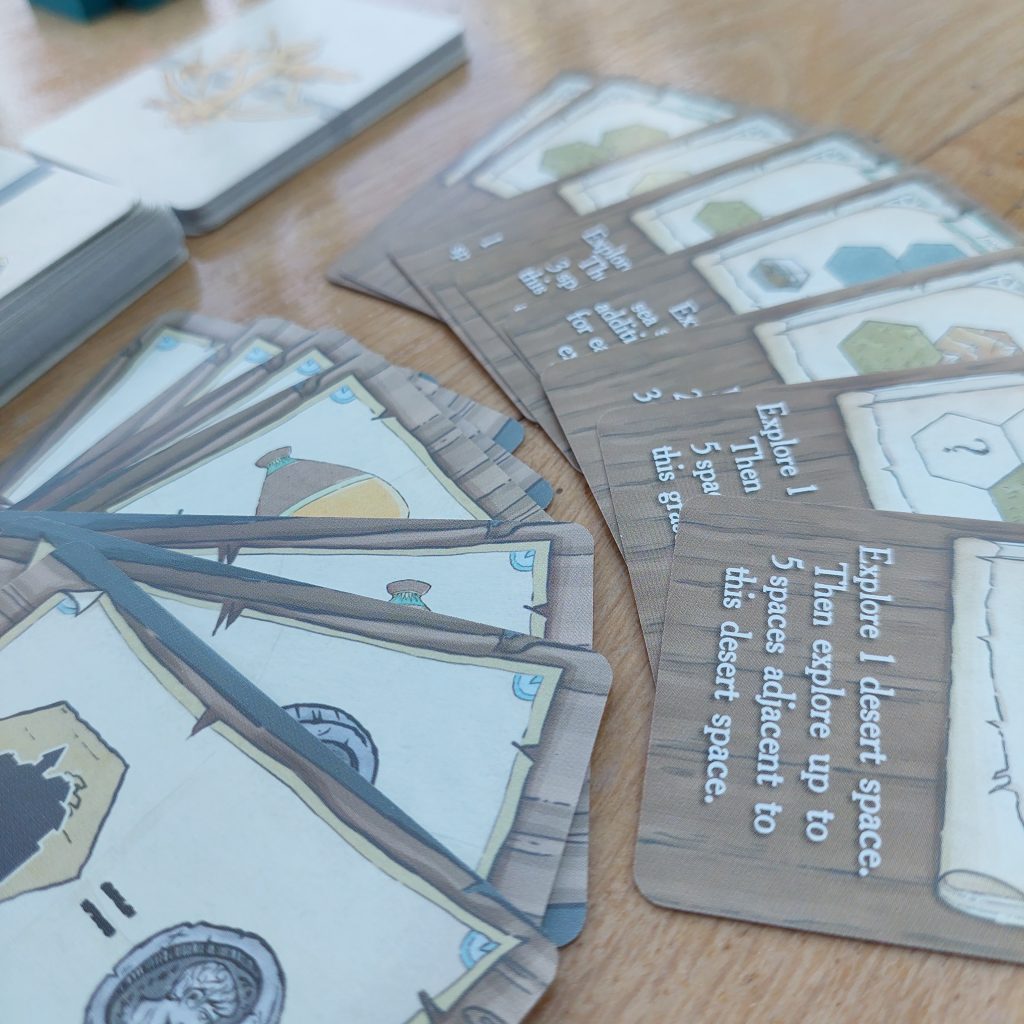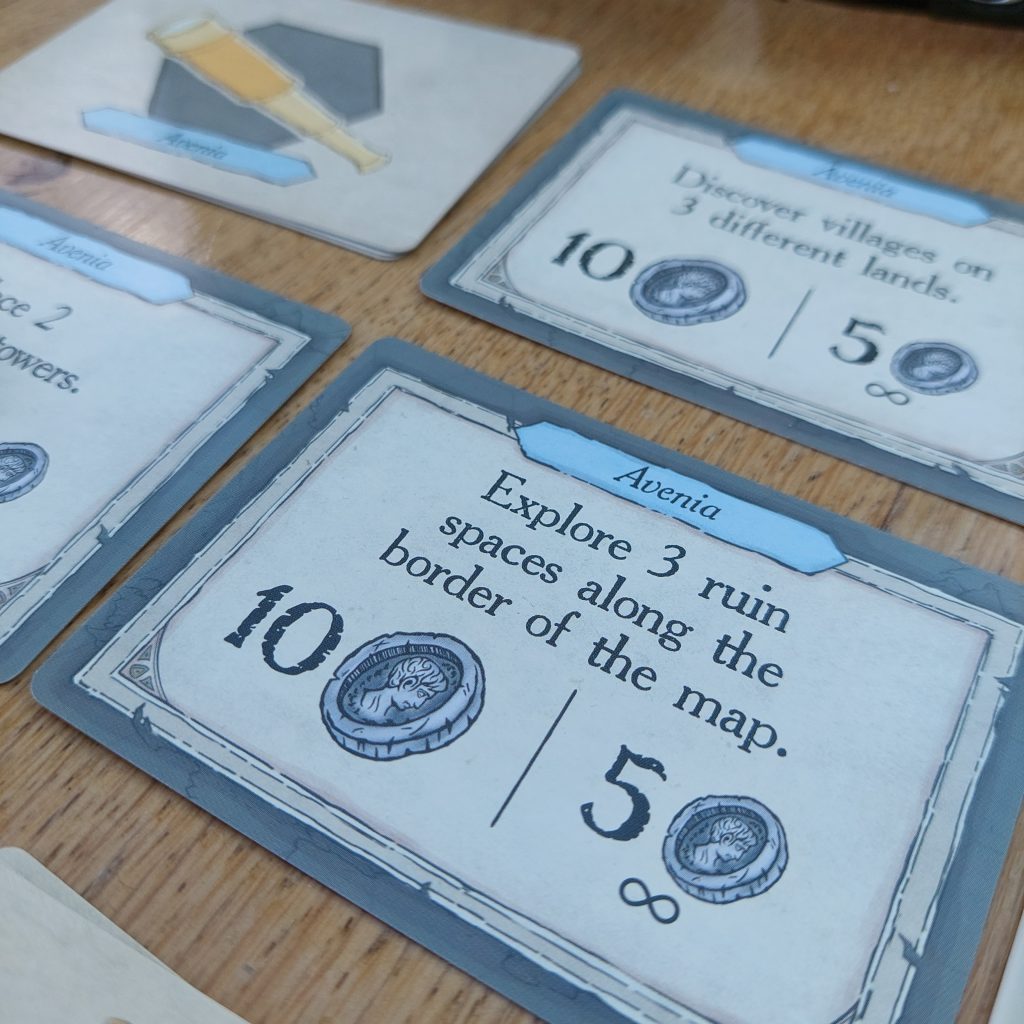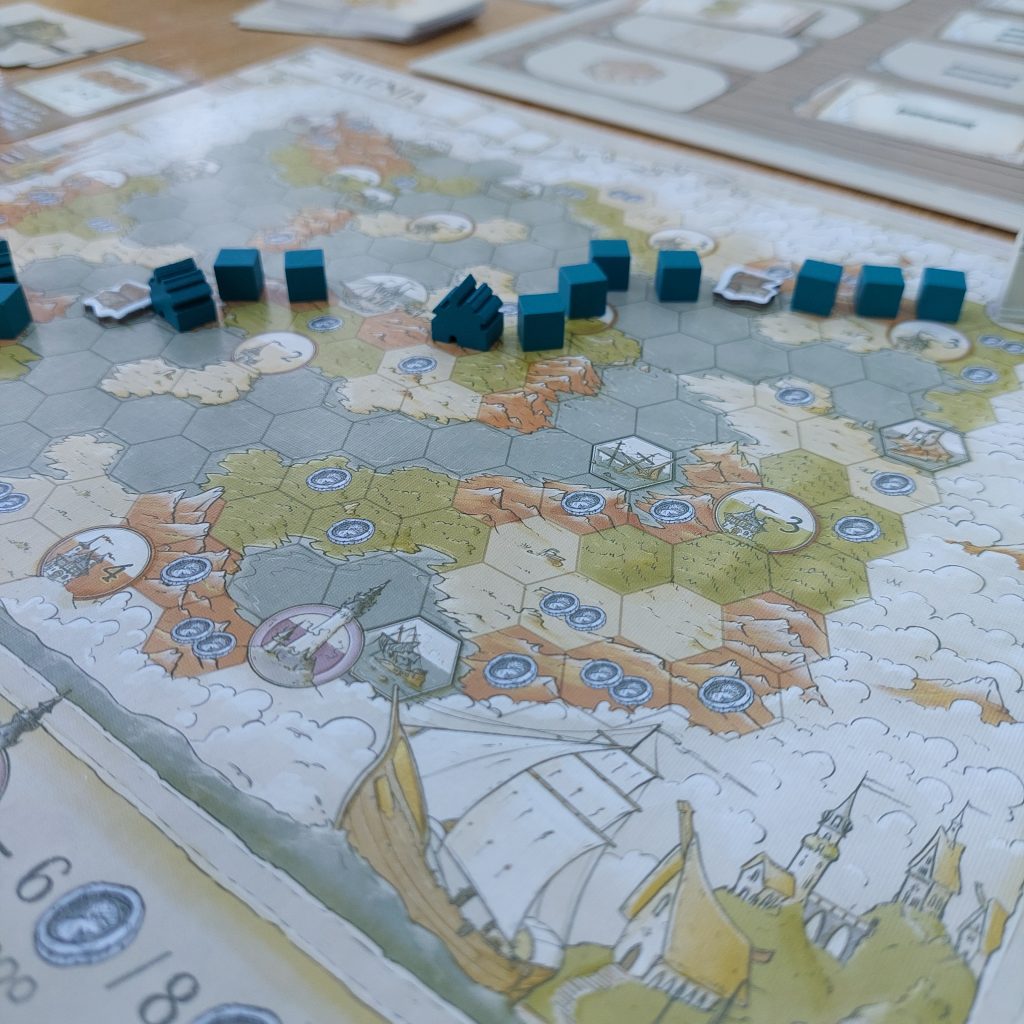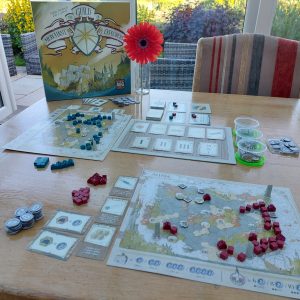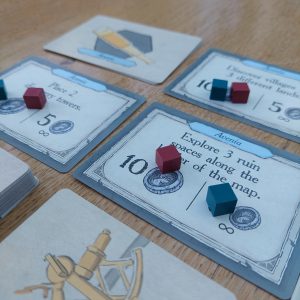We are setting sail for forgotten lands in the super smooth card flipping, territory building The Guild of Merchant Explorers by AEG!
Publisher: AEG
Designer: Matthew Dunstan, Brett J. Gilbert
Artist: Gerralt Landman
Release date: 2022
1-4 Players
Age: 14+
25-45 mins
Favouritefoe score: 9/10
*Pattern Movement * End Game Bonuses * Hidden Victory Points * Area Majority * Solo Mode * Scoring Objectives * Territory Building * Networking * Open Drafting * Strategy *
When AEG unveiled their 2022 release schedule and I first heard the concept behind The Guild of Merchant Explorers, I was expecting it to be a flip and write. Laminated personal maps comprising little hexes. Common scoring objectives. Territory building. Moving in Patterns. Networking. Expandable player counts (with extra sets)……the foundations of many a pen and paper, Zoom friendly game. And then when I saw initial photographs, my presumptions did not falter. Awesome!! I thought, because, as you all know, I love roll and writes and flip and writes.
But I quickly noticed that there was a distinct lack of pens. No markers. No felt tips. Not even a stubby, rubber chewed pencil. Hmmmm….Then I spotted the cubes. Little wooden cubes. And, as an ever more enthusiastic euro-gamer, that’s when the penny dropped, and the excitement amped up even more!
Flipping Heck!
Gobbling down the few preview videos on YouTube, The Guild of Merchant Explorers went straight into my wish list. Because, although it’s not a flip and write (or even a euro game), it has a very similar vibe. It’s easy to learn and play like one. It’s satisfying like one. And it’s got card flipping multiplayer solitaire action like one.
But there’s more to it than that, and not just because there are cubes and tokens!
The Guild of Merchant Explorers by Matthew Dunstan (also of Elysium, the most excellent Next Station London, and others) and Brett Gilbert (Elysium, Mandala, Divinare, Great Plains, and more) is a fast playing, super smooth, elegant, exploratory, territory building and trade networking game for 1-4 players.
Strictly speaking, you are tasked with re-mapping forgotten regions over 4 rounds (“Eras”) at the behest of the Queen. In essence, your path to victory is to collect the most money by the end of the game. And you earn your coins by placing your explorers in the most optimal locations each turn to build villages, unlock special moves, gain immediate cash bonuses, and access valuable sunken treasures.

Set it up, Sailor!
Set up is very simple indeed. Together, players choose which one of the 4 core maps they are going to play this game. Avenia is the most straightforward, increasing in difficulty through Aghon, Kazan, and Cnidaria. Then you lay out the main board where the 5 Explore terrain cards and 4 Era cards will be revealed over the course of a round, as well as stacks of treasure cards and investigate cards. Pile up the Tower meeples, treasure tokens, and trade route city tokens in an easy to reach spot. Finally, select and display 3 (out of 6) random scoring objective cards relating to the map in play and give each player a set of cubes and village tokens in their chosen colour.
And that’s it! It’s go time!
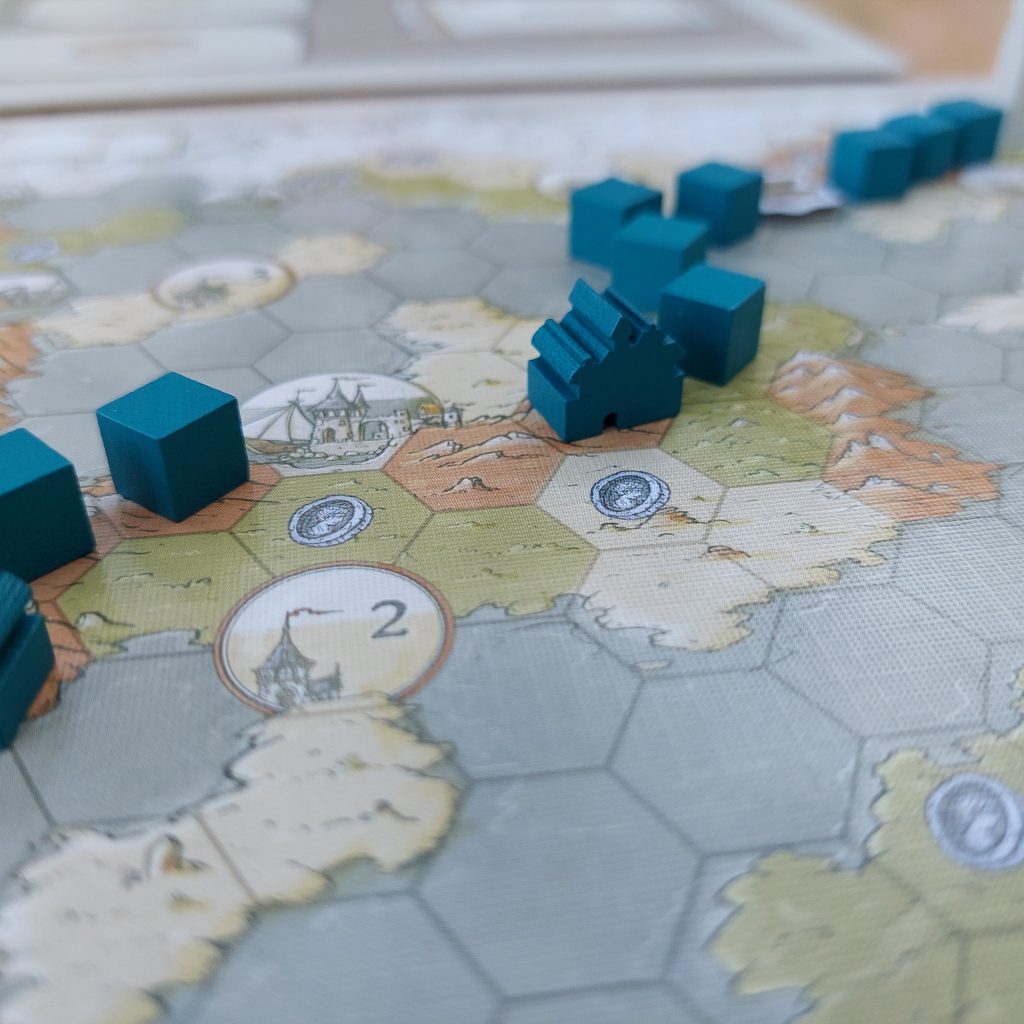
Let’s Set Sail!
In classic multi-solitaire bingo style play, the Explore terrain cards are flipped over one at a time and placed on the main board. And after each card is revealed, everybody simultaneously places their explorer cubes on matching hexes of their choice on their map. Some territory types (like the sea and the mountains), require explorer cubes to be placed adjacently from a single village or your central city or an existing sea placed cube. Others (like grassland and deserts) may be split up and sprinkled around the map so long as they are each adjacent to a village, your central starting city, or an existing explorer cube.
On the first turn, your initial placement must start at the central city square and on the matching territory type. On later turns, you’ll be able to start from any of your constructed villages so long as you can reach the required (unoccupied) territory type hexes.
If you place an explorer cube on a hex with coins on it, you’ll take those coins from the bank immediately. Similarly, if you place an explorer cube on a ruin space, you’ll immediately take a treasure card (placing a treasure token under the cube on that hex). The treasure card could be an instant bonus (in which case it is taken and then the card is discarded) or an end game bonus (so keep the card safe!). If you place a cube on a discovery space, you’ll get to construct a tower (plus a big stack of coins (which increase as the rounds go on), and if you cover all the hexes of a given terrain type on any of the lands, you can remove one and place a village token upon it.
Should you connect two city trading posts, you’ll get an immediate money injection equal to their values multiplied together. But you must then choose one city to cover with a special token that removes the value from that spot. You can still use it to link cities, but you’ll only get the value of the other trading route connected to it.

Hello, Hello! What’s going on Era?
When an Era card is revealed in the Explore deck, you’ll get to pick from two randomly shuffled unique Investigate powers. Once picked, you’ll carry out the bonus move shown on the card immediately, and then it gets placed next to your board at the appropriate Era spot.
As the rounds progress, you’ll take two more cards each time a new Era card is revealed and choose one to carry out (discarding the other). But rather than discarding the old Investigate power and replacing them with the new one, you’ll keep them all. And that’s because you get to use your previously picked one(s) when the related Era cards gets flipped over in subsequent rounds. If you’ve picked well, that’s 4 bites at the Era 1 investigate power cherry, 3 goes at Era 2, and 2 of your Era 3 pick (as they all get mixed into the Explore deck during the final 4th round).
If you complete a scoring objective during any round, you’ll get 10 coins for being first and then 5 if you still achieve it after another player pips you to the post.
At the end of each round, all your cubes get removed from your board. But don’t remove the villages. As mentioned above, these form new spots from which you can set off exploring in subsequent Eras!
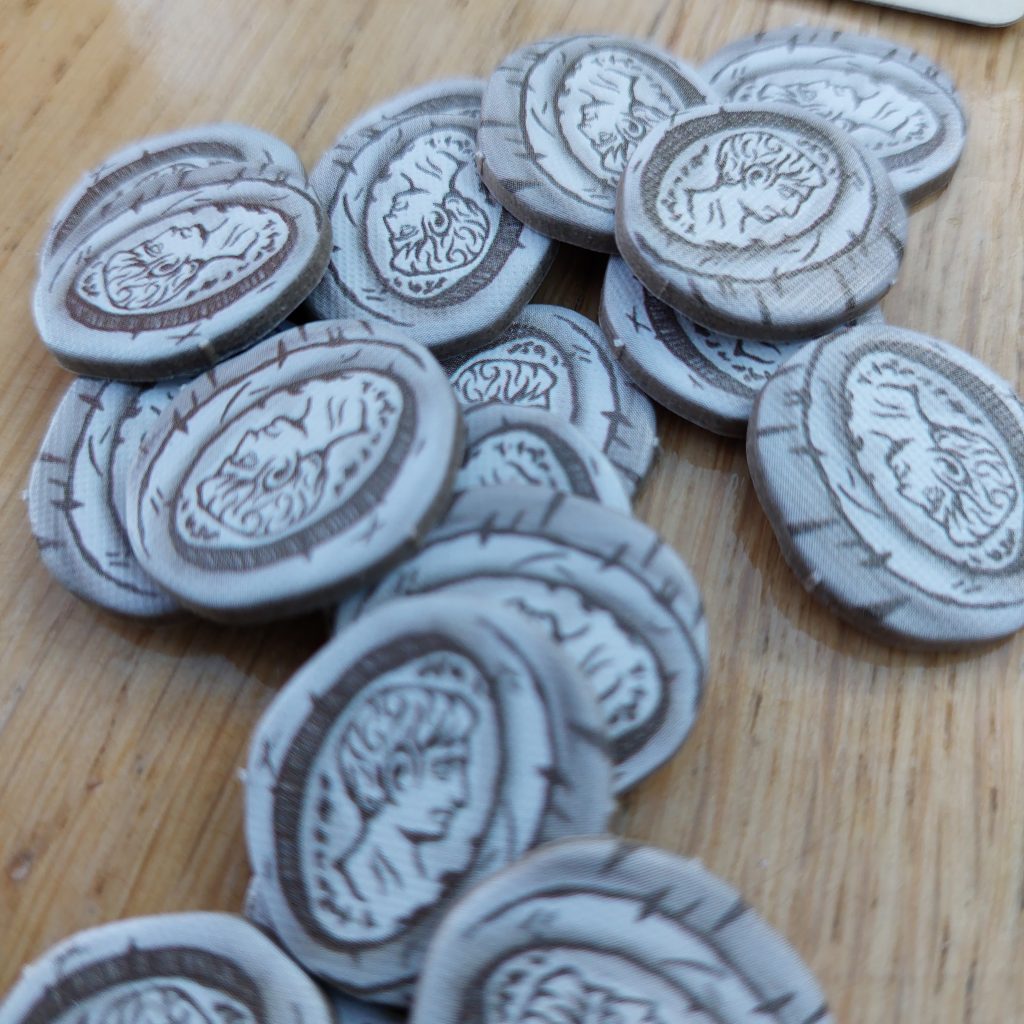
Smooth Seas!
Like swimming in a sea of warm yogurt, this game feels silky smooth and intensely satisfying. It’s a relaxing dip that feels good. And that sensation is there whether you’re exploring alone or with other players. I say with rather than against because, although it is a competitive game, the challenge to do well feels personal.
What other players do or do not do doesn’t really feature in my own strategy. I can’t mess with their routes or steal their bonuses. And I’m always striving to achieve all the scoring objectives as soon as possible. On that basis, direct interaction is minimal in this game. I want to connect trade routes, find treasures, and construct as many villages and towers as my own placement decisions permit. My opponents’ choices are only really relevant in the end-game totting up phase when the profits of their own decisions are counted and compared to mine. Until then, the challenge in The Guild of Merchant Explorers is going on in my own head.
Seeing your network spread out across your map at the end of an Era feels like an achievement. And as the villages pop up across the hexes, your options simultaneously increase and become more limited. Where you can explore from expands from Era to Era. As such, you can reach further flung lands and the goodies to be found there. But, as your board fills up and spaces become blocked, what you can do also becomes more of a compromise.
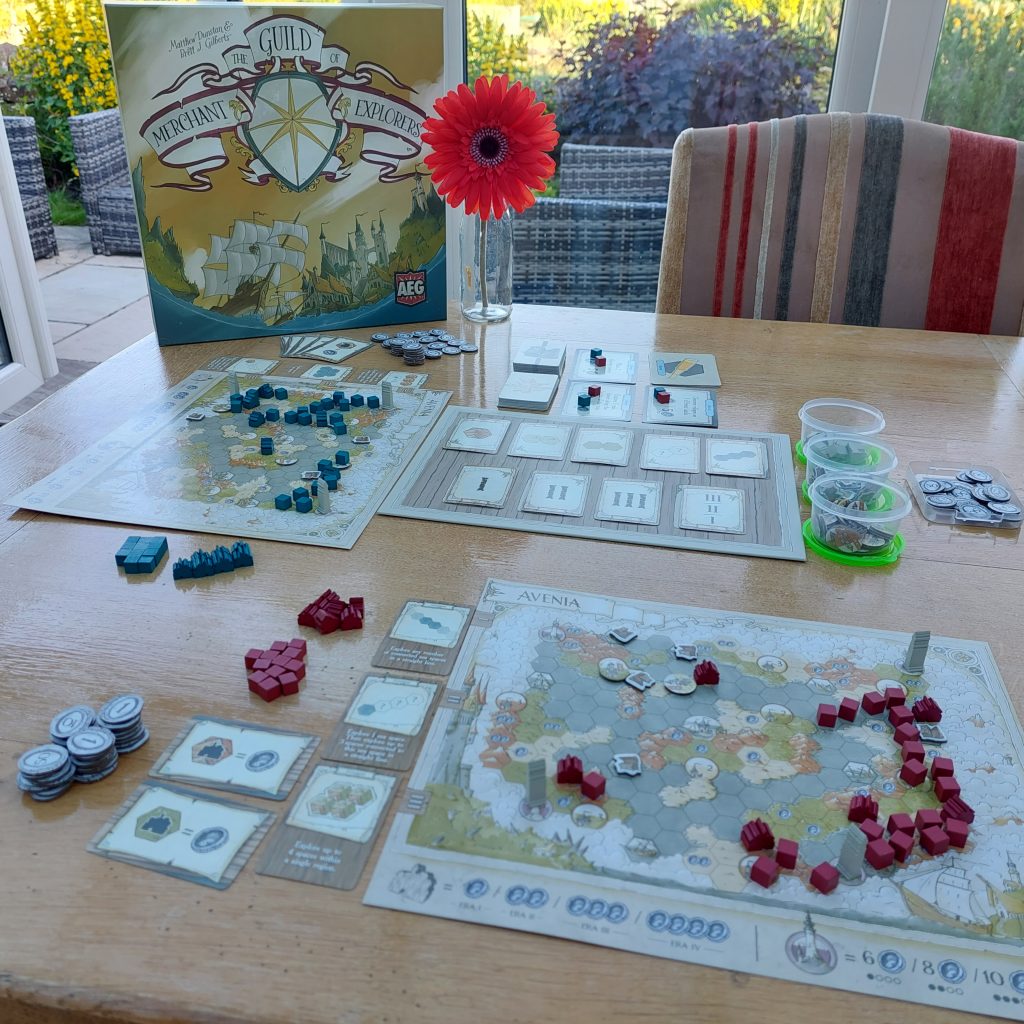
And compromise is key in this game. With only 5 basic moves in the Explore deck, you’ll need to make choices. Build a village to secure a scoring objective now? Build a tower to gain more points but stunt options for exploration?
But because you know which cards have gone before, you can begin to plan ahead. This doesn’t mean outcomes are guaranteed, of course. Unless you are flipping the final card in a given Era, the order of the moves will be subject to lady luck. And for once, being at the mercy of the draw is great. By knowing what will come up but not when, your game plan will be kept fresh and flexible. What you target on a turn will twist like a sailboat catching a strong breeze. Not far, but sufficiently to make you rethink the next few turns potentially.
Plus with about eleventy billion special Investigate cards, every round is going to throw up a mixture of old and new placement opportunities. All of which you are going to need in order to score optimally! And the cards we have played so far seem evenly matched in terms of the special powers they give. I certainly factor them into my strategy as soon as I receive my first one as I know I am going to be able to use them in each Era.
However, with so many ways to score points, your strategy can bend like a mast flexing in a stormy sea. I’m usually wary of games that are too generous in their point providing possibilities. It can sometimes make for a lack of tension or purposeful decision making.
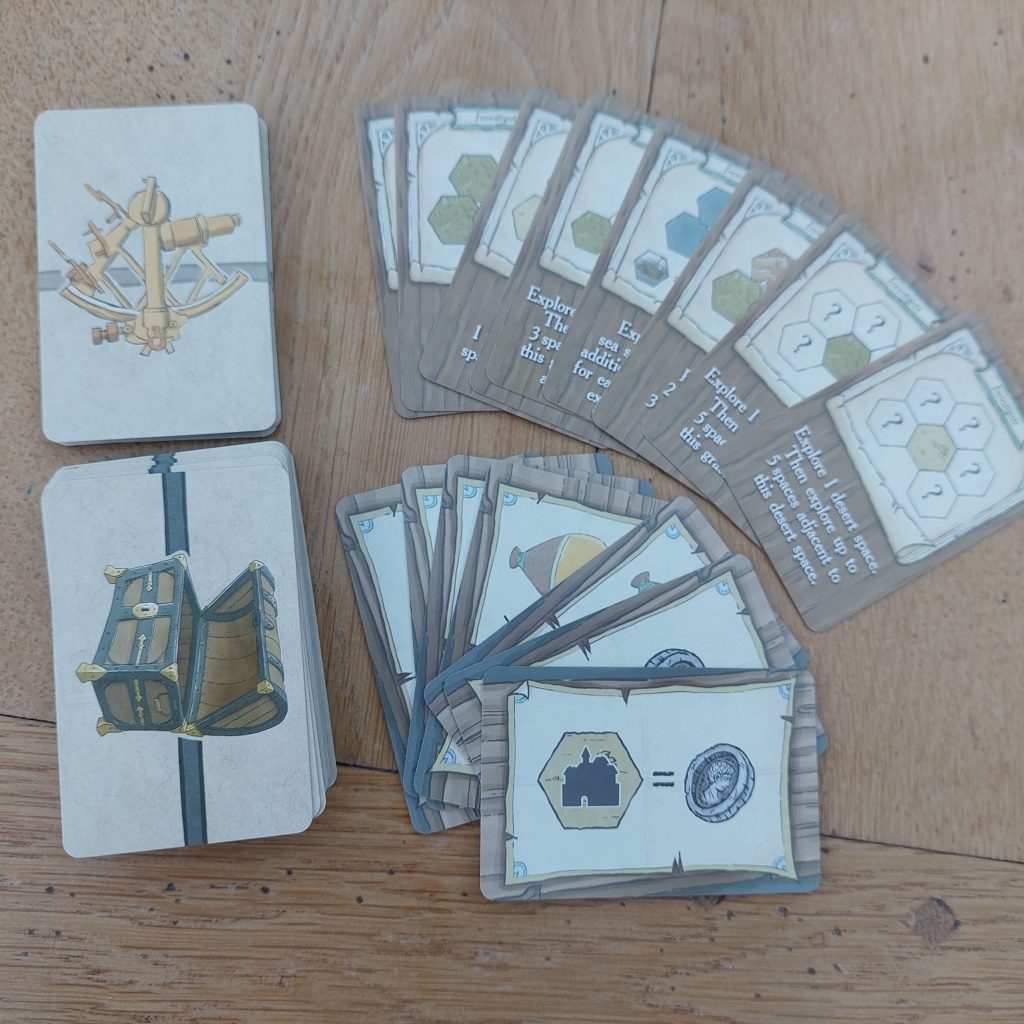
But in The Guild of Merchant Explorers I am pleased to report that is not the case. Knowing you can get points in all sorts of ways presents its own form of delicious dilemma – have you chosen the route that will lead to the most points? Could you have squeezed more out if you had done something differently? Plotter’s remorse can quickly consume if you’re not careful!
I think the designers have done a great job with the styling and theme. The oldy-worldy muted maps feel like something you really could find curled up on an old ship. And their different layouts and added challenges amp up the replayability and challenge effectively. Plotting routes and making connections on the map feels complimentary to the setting.
The components are also really nice – the icons and text on the cards are clear and (apart from the coin niggle), everything works well together. I did wonder whether taking the cubes off at the end of each Era would be a fiddly job. But this isn’t RISK. There are never that many on the board at once. And being able to refresh my player space whilst simultaneously benefitting from what I have achieved previously gives a real sense of potential development.
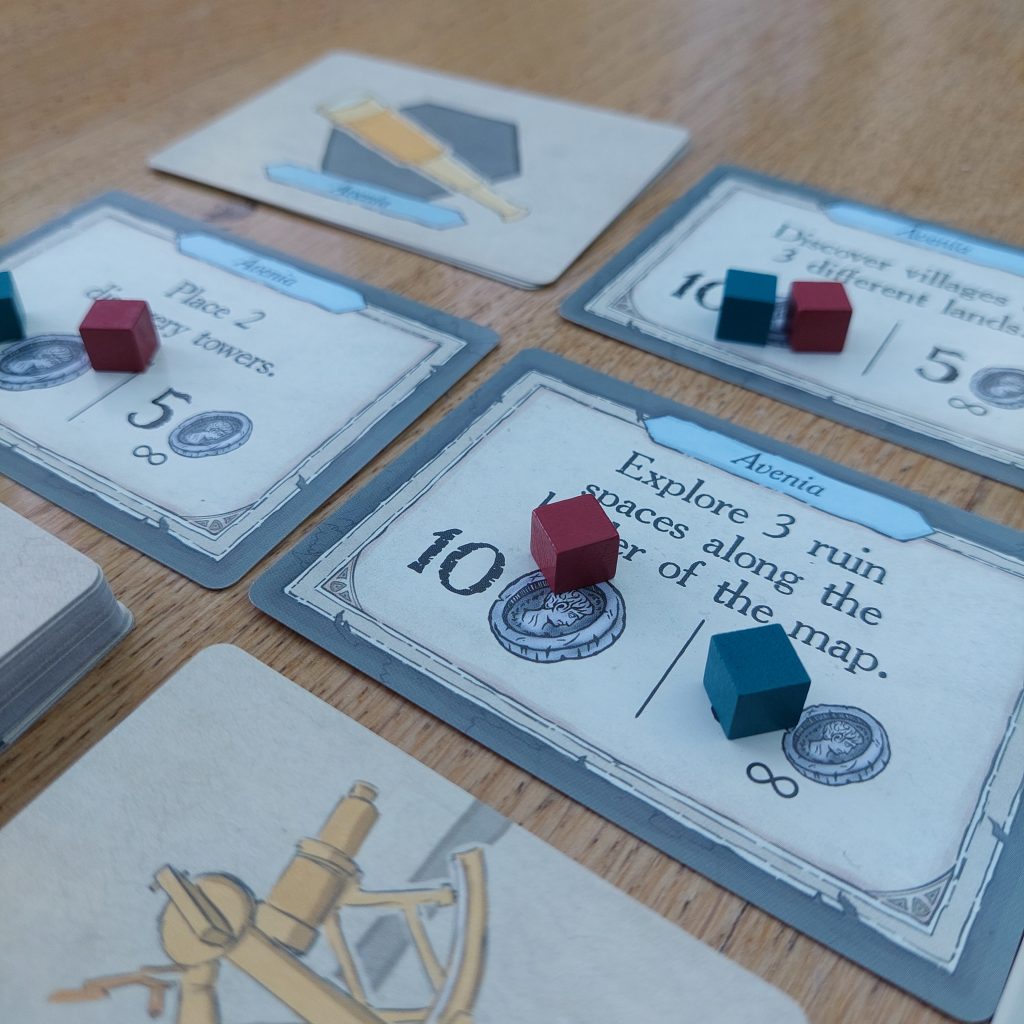
I should mention there is also a specific BYOS solo mode. And this is great because the only difference in game play is that you must satisfy all 3 scoring objectives by game-end or else you lose. The race to complete them becomes a precondition to victory and that really helps to keep my mind focussed. The designers have achieved minimal rule re-learning for a really excellent single player gaming experience.
I for one can’t wait to get back in my ship and sail to the forgotten lands. I just hope the designers and AEG release new places for us to explore as more is most definitely more in The Guild of Merchant Explorers!
Please note that a copy of this game was kindly provided by the publishers for review. I am not paid for my comments, however, and all opinions are my own]. I am also not affiliated to or sponsored by any retail store.

